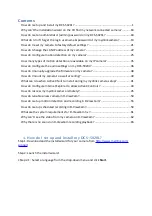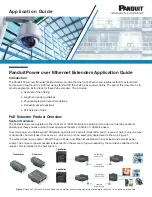
ENGLISH
_inde
x
16
Tips for using USB/SD storage devices
•
Only a USB storage device can be recognized.
•
A USB device does not work effectively when it is connected via a USB hub.
•
A USB storage device using an automatic recognition program may not be recognized.
•
A USB storage device using its own driver may not be recognized.
•
The recognition speed of a USB storage device may depend on each device.
•
Please do not turn off the display or unplug the USB storage device when the connected device is working. If the USB
storage device is suddenly disconnected, the stored files or the device itself may be damaged.
•
Please do not connect a USB storage device which was modified to work on a PC. The device may cause the monitor
to malfunction or the content fail to be played. Use only a USB storage device which contains normal music, image or
video files.
•
A USB storage device formatted as a utility program not supported by Windows may not be recognized.
•
A USB storage device (over 0.5 A) which requires an external power supply must be connected to a power supply
separately. If it is not, the device may not be recognized.
•
Please connect the USB storage device using the cable provided by the device manufacturer.
•
Some USB storage devices may not be supported or operate smoothly.
•
File alignment method of USB storage devices is similar to that of Window XP and filenames can recognize up to 100
English characters.
•
Back up important files regularly as data stored on a USB storage device may be damaged. We will not be responsible
for any data loss.
•
If the USB HDD does not have an external power source, the USB device may not be detected. To ensure the device is
detected, connect the external power source.
- Please use a power adapter for an external power source. We do not provide a USB cable for an external power
source.














































